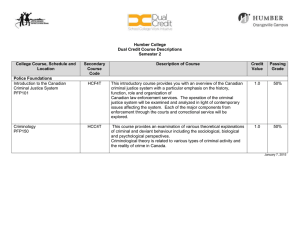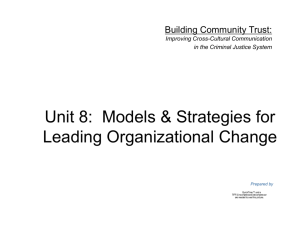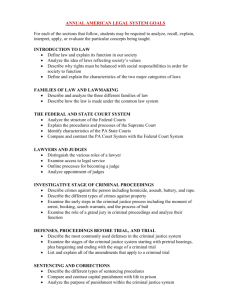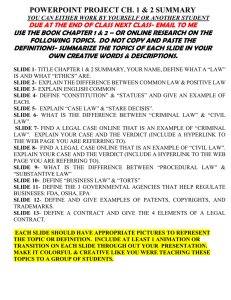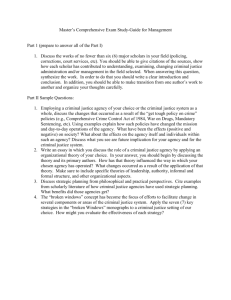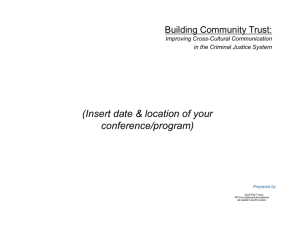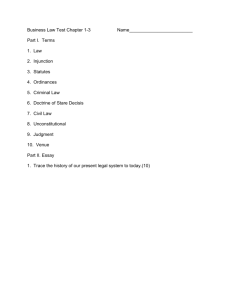Legal Rights and Responsibilities
advertisement
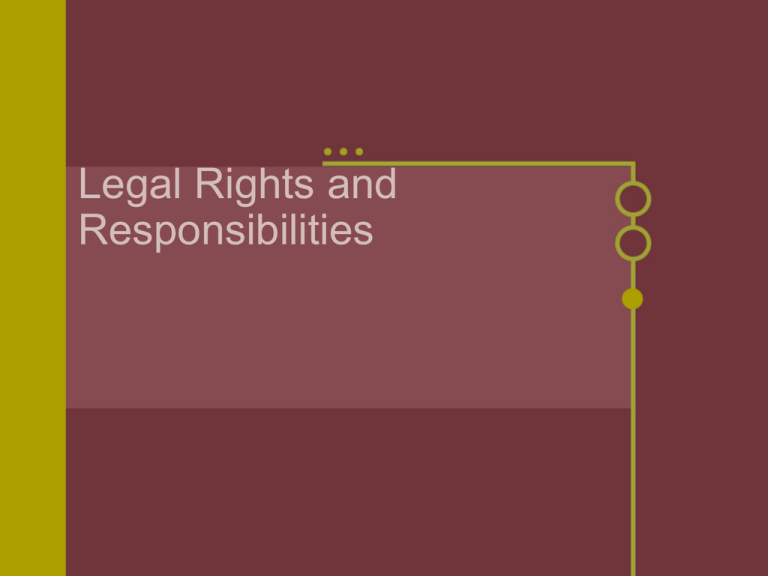
Legal Rights and Responsibilities Notebooks TP- Legal Rights and Responsibilities (Ch. 15) CM- 344-358 Geo- Map of the U.S.--Rank the states--1 being the safest Graphic Organizer- 1 page paper discussing Notebooks Ill. Dictionary- Felony, torts, Jurisprudence, statute, Stare Decisis, Writ of Habeas Corpus, Ex Post Facto, Section Reviews 347 2-5 351 2-5 358 2-5 Functions of Law Set of rules that allow people to live peacefully in a society. Binding for everyone--Nobody is above the law Everyone know what to expect…if I steal your car, I go to jail. Function of Law To prevent violent acts Set punishments for breaking the law Resolve civil disputes Money Property Contracts Non-Criminal Acts Function of Law To be effective laws must; Fair Equal Understandable Enforceable Early Laws Early laws were created for the same reasons we have laws today. Early laws were passed down from generation to generation by word of mouth. Even the earliest societies had a set of standards or laws that they lived by. First Written Laws Code of Hammurabi Set of 282 laws Very harsh penalties for breaking them The Ten Commandments Rules for how people were to live and treat one another. Don’t; Lie Cheat Steal Kill Roman Laws Jurisprudence- The Study of Law Romans were the first to look at and examine the laws governing its citizens. English Laws Common Law- Laws based on the courts decision rather than a set of written laws. Precedents- Reviewing similar cases in order to develop a ruling on a case. Public Law Rights guaranteed under the Constitution Administrative Law Ensures government agency act appropriately Statutory law (statute) Speed limits Child labor Getting a drivers license International Law Treaties, Customs, and Agreements among Nations The World Court Both sides must be willing to accept courts ruling Military Issues Trade Regulations Criminal Law Laws that seek to prevent people from deliberately or recklessly harming each other or each other’s property. Lawyers for both sides present their clients case to a judge or jury. Judges or Juries are impartial and make the best decision based on the evidence that has been presented to them. Criminal Law In criminal cases the government is the plaintiff. Plaintiff- The party that brings the charges against the alleged criminal Defendant- Person that is charged with a criminal act. Felonies Serious crimes…murder, rape, etc. Misdemeanors Less serious crimes…traffic violations, vandalism, etc. Civil Law Disputes between people or groups of people in which no criminal laws have been broken. Lawsuits Broken Contracts, Divorce Torts…civil wrongs A person is injured and claims it was caused by another persons negligence. Example???


